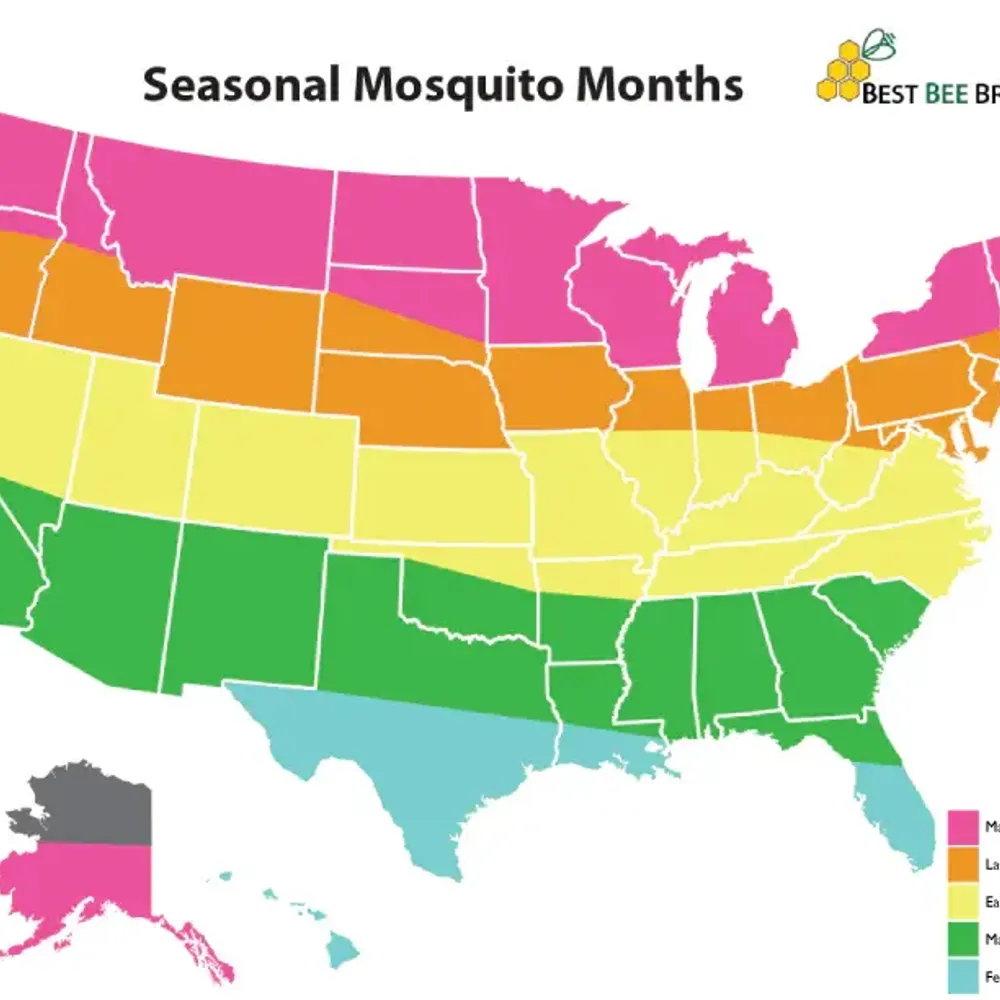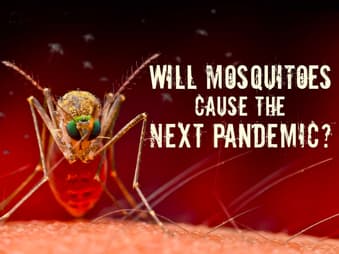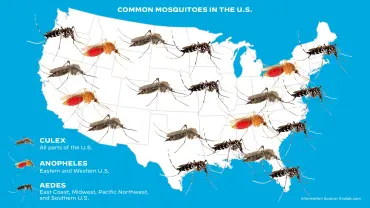
For large parts of the US, relief starts coming after Laborday once we enter September.
- SOUTHERNMOST AREAS OF TEXAS & FLORIDA
Mosquito season: February–November - SOUTH & SOUTHWEST (SOUTHERN CALIFORNIA)
Mosquito season: March–September - MID-ATLANTIC, MIDWEST & WEST (CENTRAL CALIFORNIA)
Mosquito season: Early April–September - NEW ENGLAND, NORTHERN MIDWEST & OREGON
Mosquito season: Late April–September - NORTHERNMOST STATES (EAST-WEST), PACFIC NORTHWEST & SOUTHERN ALASKA
Mosquito season: May–September
Mosquitoes prefer warm, wet environments, ideally between 60° F (15.5° C) - 80° F (26.6° C) and moderate-to-high humidity levels. Once temperatures drop below 50° F (10° C) mosquitoes become less active and either hibernate or die.
If you are curious about what happens to mosquitoes when the colder weather sets in, check out this article to learn more about how mosquitoes get through the colder months.
With September now upon us, mosquito season is starting to come to an end for much of the US, however as our resident Sr. Biologist Ben McMillian explains in this article and quoted below, these bands are likely to shift due to changing climate patterns.
Be sure to stock up on Thermacell mosquito repellent refills and products to protect yourself and your loved ones during any season.
“Weather patterns are changing worldwide as shown in the 2022-2023 Seasonal Temperature Outlook from the U.S. NOAA and the Trends in seasonal temperature across Canada chart from NRCAN above. This impacts both the fall and winter as the warmer temperatures that are characteristic of summer weather are prolonged into fall, which then prolongs the fall season, contributing to a milder winter. As we know, changes in weather patterns like this can have an impact on the ecosystems built to rely on them.”
Categories: Questions & Answers
Related Posts

Buzzing Threats: The Impending Peril of Mosquitoes in North America's 2024 Season

Why do mosquito bites cause different reactions?




